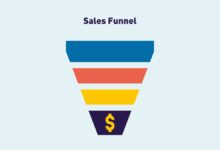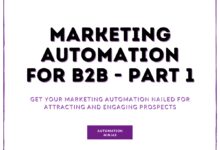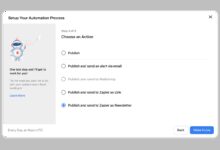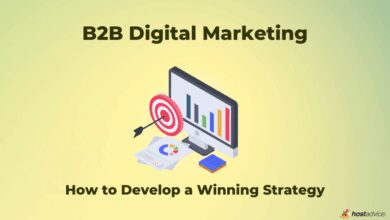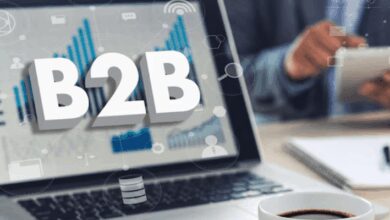B2B Marketing Strategy: 7 Proven Tactics to Skyrocket Growth
Ever wonder why some B2B companies grow like wildfire while others barely survive? The secret often lies in a smart, data-driven b2b marketing strategy. It’s not just about leads—it’s about the right leads, at the right time, with the right message.
1. Understanding the Core of a B2B Marketing Strategy

A b2b marketing strategy is more than just a plan—it’s the backbone of how businesses connect, convert, and retain other businesses. Unlike B2C, where emotions often drive purchases, B2B decisions are typically logical, data-backed, and involve multiple stakeholders. That’s why a well-structured b2b marketing strategy is essential for long-term success.
What Sets B2B Apart from B2C?
The fundamental difference lies in the buyer journey. In B2C, a single person might make a quick purchase decision. In B2B, the process is longer, more complex, and often requires approval from several departments—finance, IT, operations, and more.
- B2B sales cycles are longer and involve higher stakes.
- Purchase decisions are based on ROI, efficiency, and long-term value.
- Relationships and trust are critical components of B2B success.
“B2B marketing isn’t about selling a product; it’s about solving a business problem.” — Philip Kotler, Father of Modern Marketing
Key Components of a Successful B2B Marketing Strategy
A winning b2b marketing strategy isn’t built overnight. It requires a clear understanding of your market, your audience, and your goals. Here are the foundational elements:
Target Audience Definition: Who are your ideal customers?What industries do they operate in?What challenges do they face?Value Proposition: What makes your solution better than the competition?Why should a business choose you?Channel Selection: Where does your audience spend their time?LinkedIn?Industry forums?Email.
?Choose wisely.Content Strategy: From whitepapers to webinars, your content must educate and build trust.Measurement & KPIs: How will you track success?Lead quality, conversion rates, customer acquisition cost (CAC), and lifetime value (LTV) are all critical metrics.2.Building a Data-Driven B2B Marketing Strategy
In today’s digital world, guesswork has no place in a b2b marketing strategy.Data is the compass that guides every decision—from audience targeting to campaign optimization.Companies that leverage data outperform their peers by up to 85% in sales growth and profitability (source: McKinsey)..
Collecting and Analyzing Customer Data
To build a data-driven b2b marketing strategy, you need to gather insights from multiple sources:
- CRM Systems: Tools like Salesforce or HubSpot track customer interactions, deal stages, and sales history.
- Website Analytics: Google Analytics reveals how visitors engage with your content, which pages convert, and where they drop off.
- Social Listening: Platforms like LinkedIn and Twitter provide real-time feedback on industry trends and customer sentiment.
- Surveys and Feedback: Direct input from customers can uncover pain points and unmet needs.
Once collected, this data must be cleaned, segmented, and analyzed. Look for patterns—such as which industries respond best to certain content types or which job titles are most likely to convert.
Using Predictive Analytics in B2B Marketing
Predictive analytics uses historical data and machine learning to forecast future behavior. For example, it can predict which leads are most likely to convert, allowing your sales team to prioritize high-value prospects.
- Tools like IBM Watson Analytics and Salesforce Einstein offer AI-powered insights.
- Predictive lead scoring can increase conversion rates by up to 300% (source: Forrester).
- It also helps in personalizing content at scale—sending the right message to the right person at the right time.
3. Defining Your Ideal Customer Profile (ICP)
One of the most critical steps in any b2b marketing strategy is identifying your Ideal Customer Profile (ICP). Without a clear ICP, your marketing efforts will be scattered and inefficient.
What Is an Ideal Customer Profile?
An ICP is a detailed description of the company that would benefit most from your product or service. It includes firmographic data such as:
- Industry
- Company size (revenue, number of employees)
- Geographic location
- Technology stack
- Business model
For example, a SaaS company selling HR software might target mid-sized tech firms (50–500 employees) in North America that use cloud-based infrastructure.
How to Build an ICP Step by Step
Creating an accurate ICP involves both data and intuition. Follow these steps:
- Analyze Existing Customers: Look at your most profitable and loyal clients. What do they have in common?
- Interview Sales and Customer Success Teams: They interact with customers daily and can provide qualitative insights.
- Use Market Research Tools: Platforms like Crunchbase and LinkedIn Sales Navigator help identify companies that match your profile.
- Validate with Pilot Campaigns: Run small-scale campaigns targeting your ICP and measure response rates.
A well-defined ICP ensures your b2b marketing strategy focuses on quality over quantity—leading to higher conversion rates and lower customer acquisition costs.
4. Crafting a Compelling Value Proposition
Your value proposition is the heart of your b2b marketing strategy. It answers the question every prospect has: “Why should I care?” A strong value proposition clearly communicates the unique benefits your solution offers and how it solves a specific business problem.
Elements of a Powerful Value Proposition
A compelling value proposition should be:
- Clear: Avoid jargon. Use simple, direct language.
- Specific: Focus on a particular benefit, not vague promises.
- Quantifiable: Use numbers when possible (e.g., “Reduce operational costs by 30%”).
- Differentiated: Highlight what sets you apart from competitors.
For example, instead of saying “We provide cloud storage solutions,” say “Secure, scalable cloud storage that reduces IT overhead by 40% for mid-sized enterprises.”
How to Test and Optimize Your Value Proposition
Don’t assume your first draft is perfect. Test it with real prospects using A/B testing on landing pages, emails, or ads.
- Run split tests with different value propositions and measure click-through and conversion rates.
- Conduct customer interviews to see if your messaging resonates.
- Use tools like Hotjar to see how users interact with your messaging on your website.
Continuous refinement ensures your b2b marketing strategy remains aligned with customer needs.
5. Leveraging Content Marketing in Your B2B Strategy
Content is king in B2B marketing. In fact, 96% of B2B buyers want content that helps them make informed decisions (source: Content Marketing Institute). A strategic content approach builds trust, nurtures leads, and positions your brand as an industry leader.
Types of High-Impact B2B Content
Not all content is created equal. Focus on formats that deliver value and support the buyer’s journey:
- Whitepapers: In-depth reports that showcase expertise and solve complex problems.
- Case Studies: Real-world examples of how your solution delivered results.
- Webinars: Interactive sessions that educate and engage prospects.
- Blog Posts: SEO-optimized articles that answer common industry questions.
- E-books: Comprehensive guides that capture leads through gated content.
Each piece should align with a stage in the buyer’s journey: awareness, consideration, or decision.
Creating a Content Calendar for Consistency
Consistency is key. A content calendar ensures you publish regularly and stay aligned with business goals.
- Map content to buyer personas and ICPs.
- Schedule topics around product launches, industry events, or seasonal trends.
- Assign roles: Who writes, edits, designs, and promotes each piece?
- Use tools like CoSchedule or Trello to manage workflows.
A well-planned content strategy strengthens your overall b2b marketing strategy by keeping your brand top-of-mind.
6. Mastering Account-Based Marketing (ABM)
Account-Based Marketing (ABM) is one of the most effective b2b marketing strategy approaches for high-value clients. Instead of casting a wide net, ABM focuses on targeting specific accounts with personalized campaigns.
What Is Account-Based Marketing?
ABM treats individual accounts as markets of one. It aligns marketing and sales teams to create hyper-personalized experiences for key decision-makers within a target company.
- It’s ideal for enterprise sales with long cycles and high contract values.
- According to ABM Institute, companies using ABM report 200% higher sales pipeline efficiency.
- It increases customer retention and cross-sell opportunities.
Steps to Launch a Successful ABM Campaign
Implementing ABM requires coordination and precision:
- Identify Target Accounts: Use your ICP and sales data to select high-potential companies.
- Research Key Stakeholders: Find decision-makers, influencers, and champions within each account.
- Create Personalized Content: Develop tailored emails, landing pages, and ads for each account.
- Engage Across Channels: Combine email, LinkedIn outreach, direct mail, and events for maximum impact.
- Measure and Optimize: Track engagement, meetings booked, and deal progression.
ABM turns your b2b marketing strategy into a precision instrument, not a scattergun.
7. Measuring and Optimizing Your B2B Marketing Strategy
Even the best b2b marketing strategy will fail without proper measurement. You need to track performance, learn from data, and continuously improve.
Key B2B Marketing KPIs to Track
Focus on metrics that reflect real business outcomes:
- Lead Conversion Rate: Percentage of leads that become customers.
- Customer Acquisition Cost (CAC): Total cost to acquire a new customer.
- Customer Lifetime Value (LTV): Total revenue expected from a customer over time.
- Marketing Qualified Leads (MQLs): Leads deemed ready for sales follow-up.
- Sales Qualified Leads (SQLs): Leads accepted by the sales team.
- Return on Marketing Investment (ROMI): Revenue generated per dollar spent on marketing.
Tools like Google Analytics, HubSpot, and Marketo help automate tracking and reporting.
How to Conduct a Marketing Audit
A marketing audit evaluates the effectiveness of your b2b marketing strategy. It should be done quarterly or biannually.
- Review Campaign Performance: Which channels delivered the best ROI?
- Assess Content Effectiveness: Which pieces generated the most leads or engagement?
- Check Alignment Between Sales and Marketing: Are leads being properly qualified and handed off?
- Update ICP and Personas: Markets evolve—so should your targeting.
- Identify Gaps and Opportunities: Are there untapped channels or underserved segments?
Use audit findings to refine your strategy, reallocate budgets, and set new goals.
8. Integrating Technology into Your B2B Marketing Strategy
Technology is no longer optional in a modern b2b marketing strategy. From automation to AI, the right tools can scale your efforts and improve efficiency.
Essential B2B Marketing Technology Stack
Build a tech stack that supports your strategy:
- CRM (Customer Relationship Management): Salesforce, HubSpot, or Zoho to manage leads and relationships.
- Marketing Automation: Tools like Marketo, Pardot, or ActiveCampaign to nurture leads with personalized workflows.
- Email Marketing Platforms: Mailchimp, Sendinblue, or Constant Contact for targeted campaigns.
- Content Management Systems (CMS): WordPress, HubSpot CMS, or Webflow to publish and manage content.
- Analytics and Reporting: Google Analytics, Mixpanel, or Tableau for data visualization.
- ABM Platforms: Terminus, Demandbase, or 6sense for account-level targeting.
Integration between these tools ensures seamless data flow and better decision-making.
Using AI and Automation to Scale Your Strategy
AI is transforming b2b marketing strategy by enabling hyper-personalization at scale.
- Chatbots: Provide instant support and qualify leads 24/7.
- Predictive Lead Scoring: AI ranks leads based on likelihood to convert.
- Dynamic Content: Websites and emails that adapt based on user behavior.
- Sales Forecasting: AI models predict future revenue based on current pipeline data.
Companies using AI in marketing see up to 50% higher lead conversion rates (source: McKinsey).
9. Aligning Sales and Marketing Teams for Maximum Impact
One of the biggest challenges in executing a b2b marketing strategy is misalignment between sales and marketing. When these teams work in silos, leads fall through the cracks and revenue suffers.
Why Sales and Marketing Alignment Matters
Aligned companies achieve 36% higher customer retention and 38% higher sales win rates (source: MarketingProfs).
- Marketing generates leads, but sales must close them.
- Shared goals and metrics foster collaboration.
- Joint planning sessions improve messaging and targeting.
Strategies to Improve Sales-Marketing Alignment
Here’s how to bridge the gap:
- Create a Service Level Agreement (SLA): Define how many MQLs marketing will deliver and how quickly sales will follow up.
- Hold Regular Sync Meetings: Weekly or biweekly check-ins to review pipeline health.
- Use Shared Dashboards: Real-time visibility into lead status and campaign performance.
- Co-Create Content: Sales provides insights from customer conversations; marketing turns them into compelling assets.
- Implement Closed-Loop Reporting: Track leads from first touch to closed deal to identify bottlenecks.
When sales and marketing are aligned, your b2b marketing strategy becomes a revenue engine, not just a cost center.
10. Adapting to Emerging Trends in B2B Marketing
The B2B landscape is evolving rapidly. To stay competitive, your b2b marketing strategy must adapt to new technologies, buyer behaviors, and market dynamics.
Rise of Video and Interactive Content
Video is no longer just for B2C. 95% of B2B marketers say video helps them educate customers (source: Wyzowl).
- Product demos, customer testimonials, and explainer videos build trust.
- Interactive content like quizzes and calculators boost engagement.
- Live streaming events and virtual conferences are now standard.
The Shift to Buyer-Centric Marketing
Today’s B2B buyers are more informed and independent. They complete up to 70% of their journey before contacting sales (source: Gartner).
- Focus on providing value, not pushing products.
- Map content to each stage of the buyer’s journey.
- Empower buyers with self-serve resources like knowledge bases and ROI calculators.
A buyer-centric b2b marketing strategy respects the customer’s autonomy and builds trust over time.
What is a b2b marketing strategy?
A b2b marketing strategy is a comprehensive plan that outlines how a business will attract, engage, and convert other businesses into customers. It includes target audience identification, value proposition development, channel selection, content creation, and performance measurement.
How is B2B marketing different from B2C?
B2B marketing involves longer sales cycles, multiple decision-makers, and a focus on ROI and business value. B2C is typically faster, emotion-driven, and targets individual consumers.
What are the best channels for B2B marketing?
The most effective channels include LinkedIn, email marketing, SEO, content marketing (blogs, whitepapers), webinars, and account-based marketing platforms. The best choice depends on your audience and goals.
How do you measure the success of a b2b marketing strategy?
Key metrics include lead conversion rate, customer acquisition cost (CAC), customer lifetime value (LTV), marketing qualified leads (MQLs), and return on marketing investment (ROMI).
Why is content important in B2B marketing?
Content educates buyers, builds credibility, and nurtures leads through the complex B2B sales cycle. High-quality content positions your brand as a trusted advisor, not just a vendor.
Building a powerful b2b marketing strategy isn’t about chasing trends—it’s about creating a sustainable, data-driven system that delivers results. From defining your ideal customer to aligning sales and marketing, every element plays a crucial role. The most successful companies don’t just execute tactics; they think strategically, measure relentlessly, and adapt quickly. Whether you’re leveraging AI, mastering ABM, or refining your content, the goal remains the same: to solve real business problems and create lasting value. Start with a solid foundation, stay customer-focused, and let data guide your decisions. That’s how you turn your b2b marketing strategy into a growth engine.
Further Reading:
